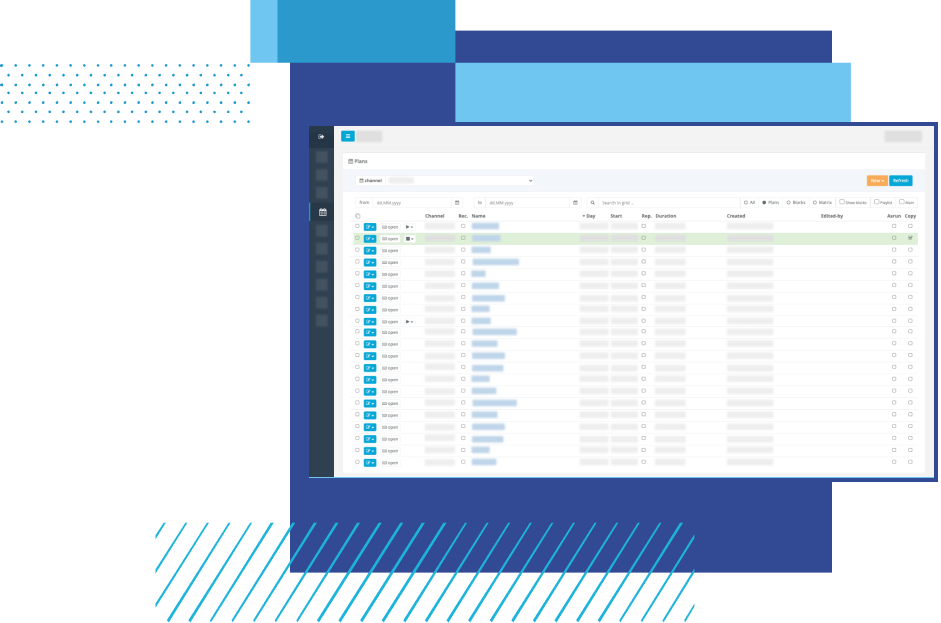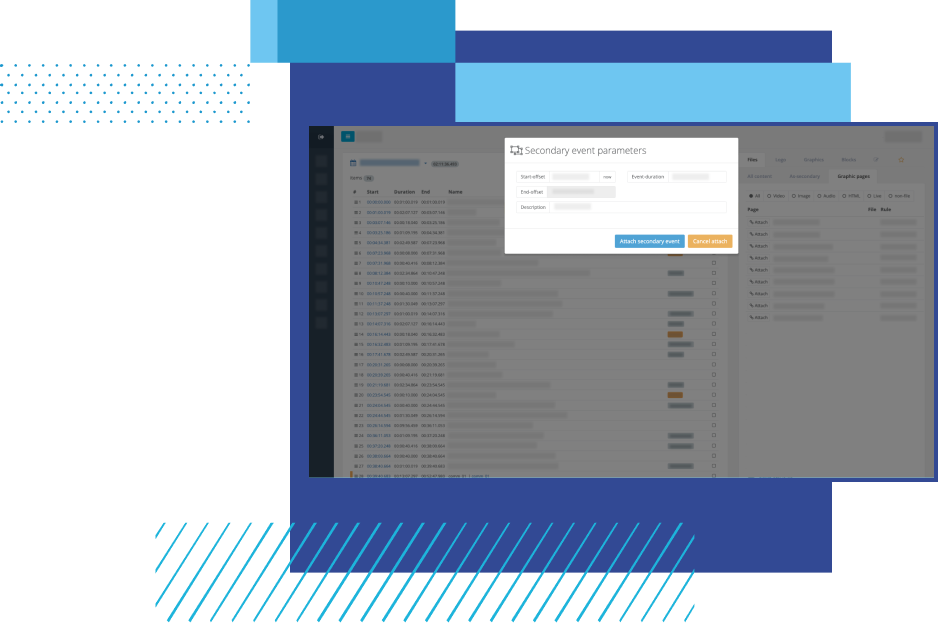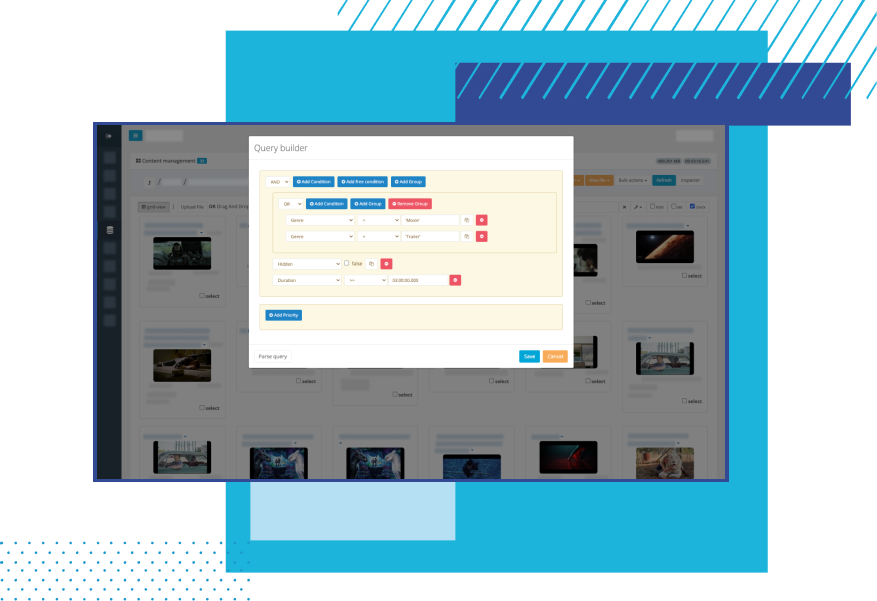Planning & scheduling
Planning the channel
One or multiple plans with a broadcast time define the channel's program. Plans are composed of primary and secondary items. Our planning module uses various advanced tools to increase the productivity of the planning process. The user can use planning templates, static and dynamic blocks, fixed start times, floating durations, and graphics templates called pages. To verify the plan, the user may use file availability checking.

Schedules & blocks
All schedules, whether imported or created natively in the integrated schedule editor, form the basis of the channel program. The schedules contain primary and secondary items in a continuous sequence. In addition to schedules, blocks and plan templates are also provided in the planning module to make the planning process more efficient. Blocks are smaller fragments grouping items that can be scheduled independently from the main schedule. The blocks are inserted into the schedules and expanded either manually or dynamically. They can be processed to the level of a playing playlist, waiting for specific content like commercials or interstitials until the last moment before broadcasting.
Content-based planning
The schedule editor wraps the content into individual items with given rules applied to the schedule. The rule defines the way of processing the content when playing it. A schedule then consists of individual items, primary and secondary, generated by these rules. Most primary items are videos, live feeds, and full-screen graphics. Secondary items mainly represent logos and graphics in the form of images or titles or lower thirds, which are additionally attached to primary events.


Secondary items
Secondary items enhance every broadcasting. They add a visual feeling in the form of brand graphics and other more detailed information for viewers, such as data about the broadcast program, text news in the ticker, or the PG logo in the form of the recommended age for watching the program. Advanced secondary events can be videos, so-called picture-in-picture, audio supplementing a live feed, full-page graphics, static images, or a sequence of images. HTML-defined secondary item graphics is a standard way to define parameter-based graphics enriching the channel with dynamic information bound to the playlist content.
AMOS
Stream Circle unveils AMOS – Autonomous Metadata Oriented Scheduling. AMOS is a rule-based AI engine helping broadcasters to build continuous playlists automatically and autonomously using static and dynamic metadata and saving a lot of human effort and workforce. AMOS is ready to be connected to a Stream Circle content management module or any other MAM and start planning and playing a new channel. AMOS is used in use cases for automated news channels, music channels, and commercial spot selection based on usage and prioritization rules.
